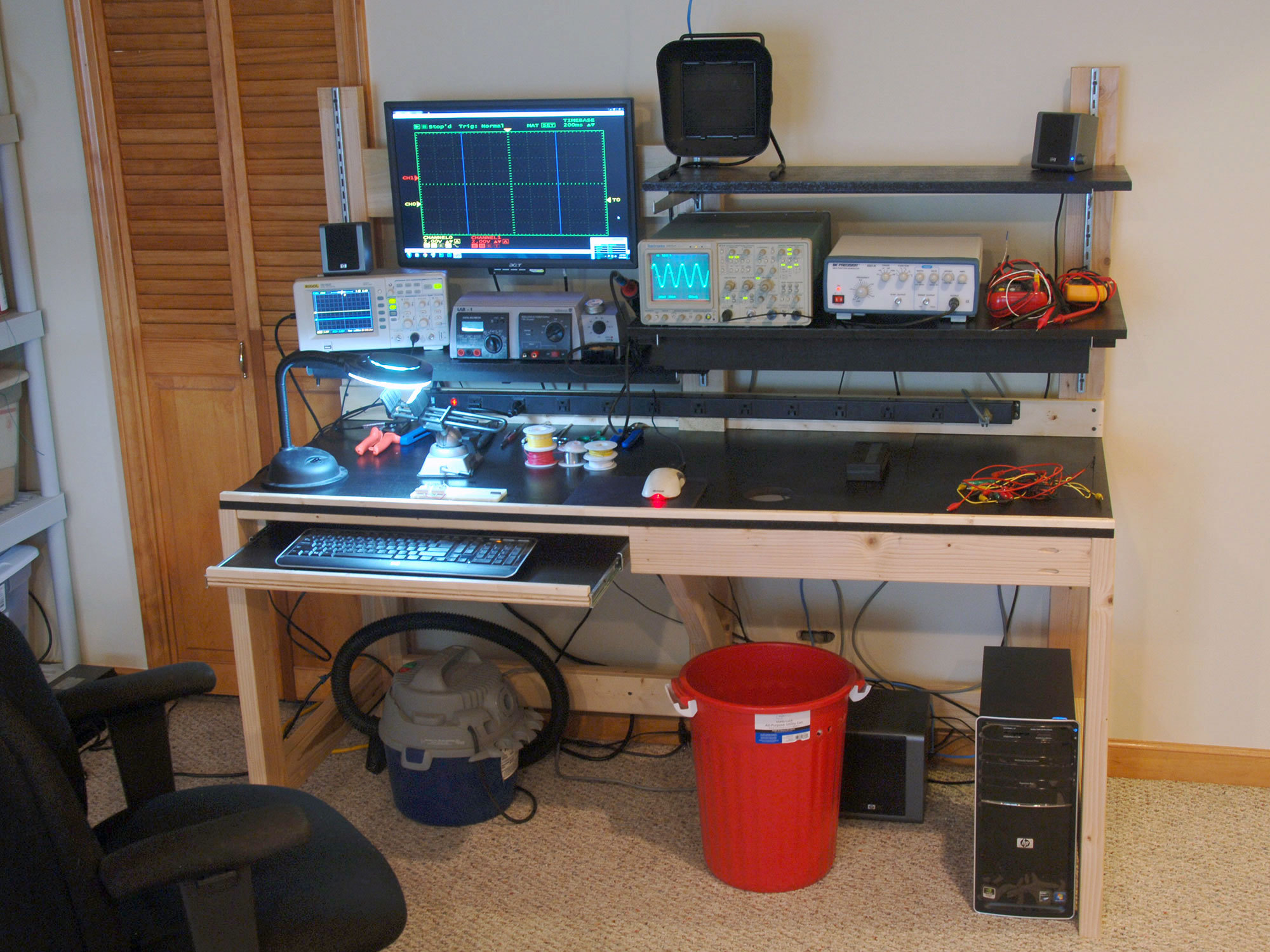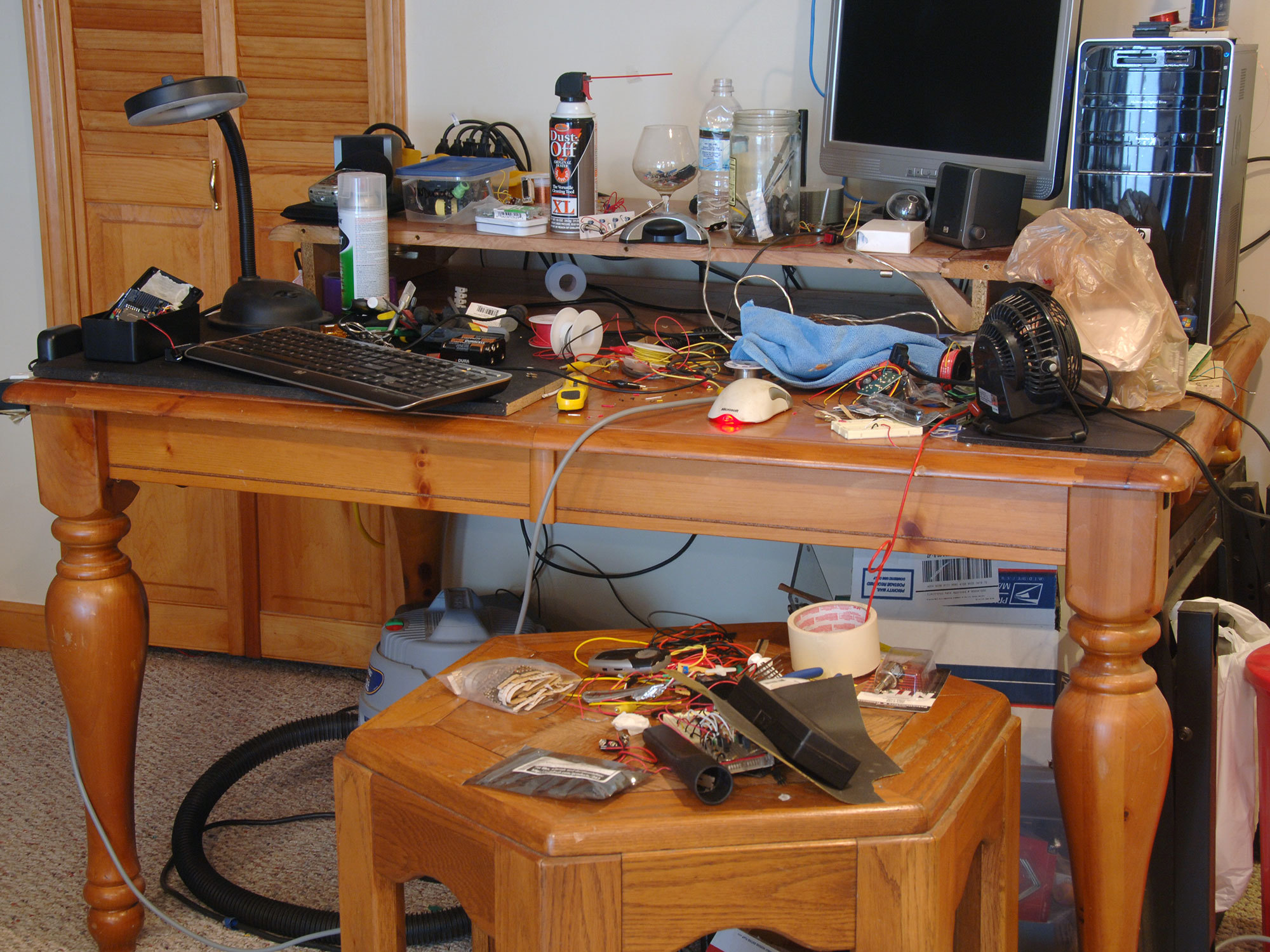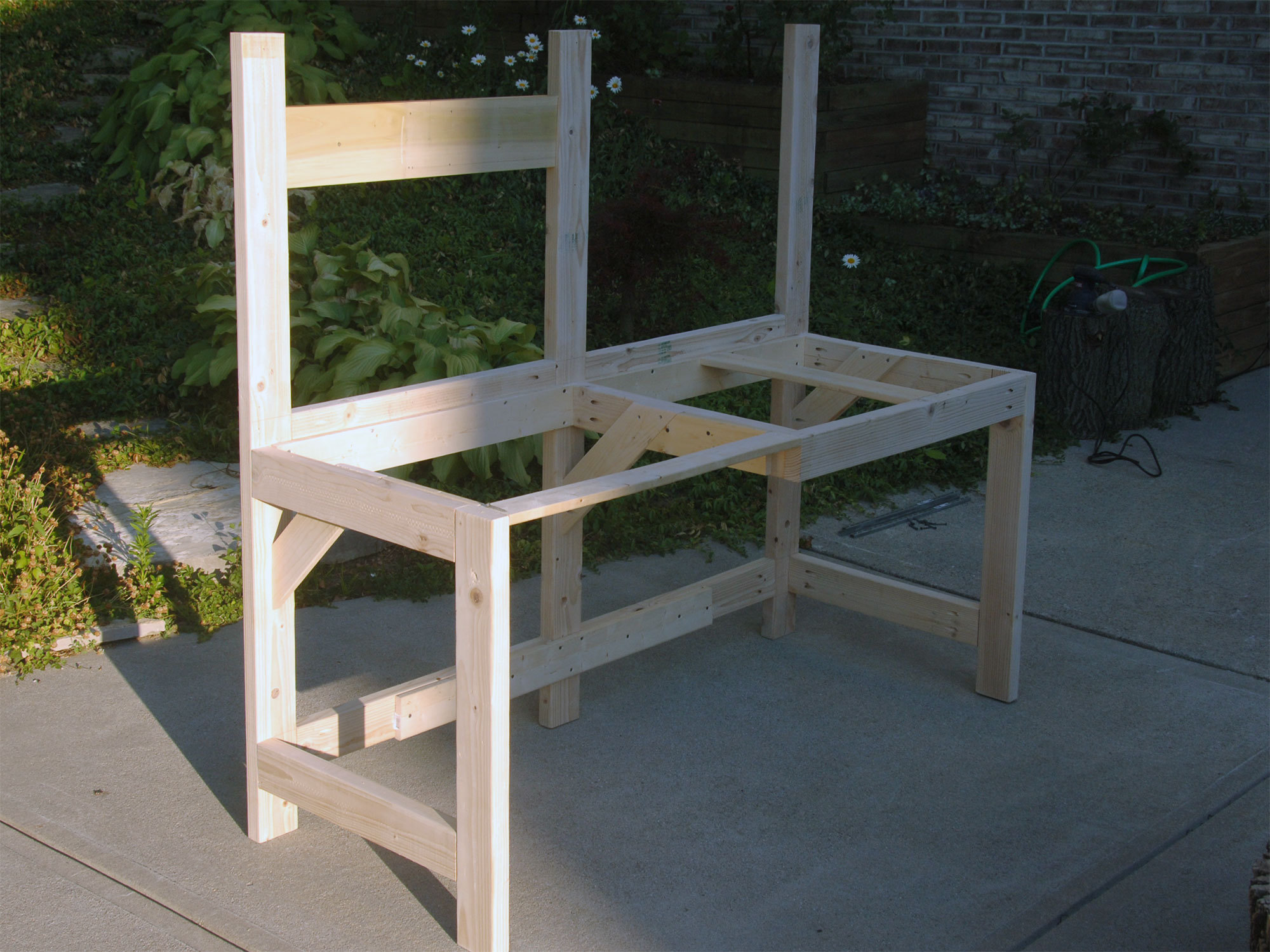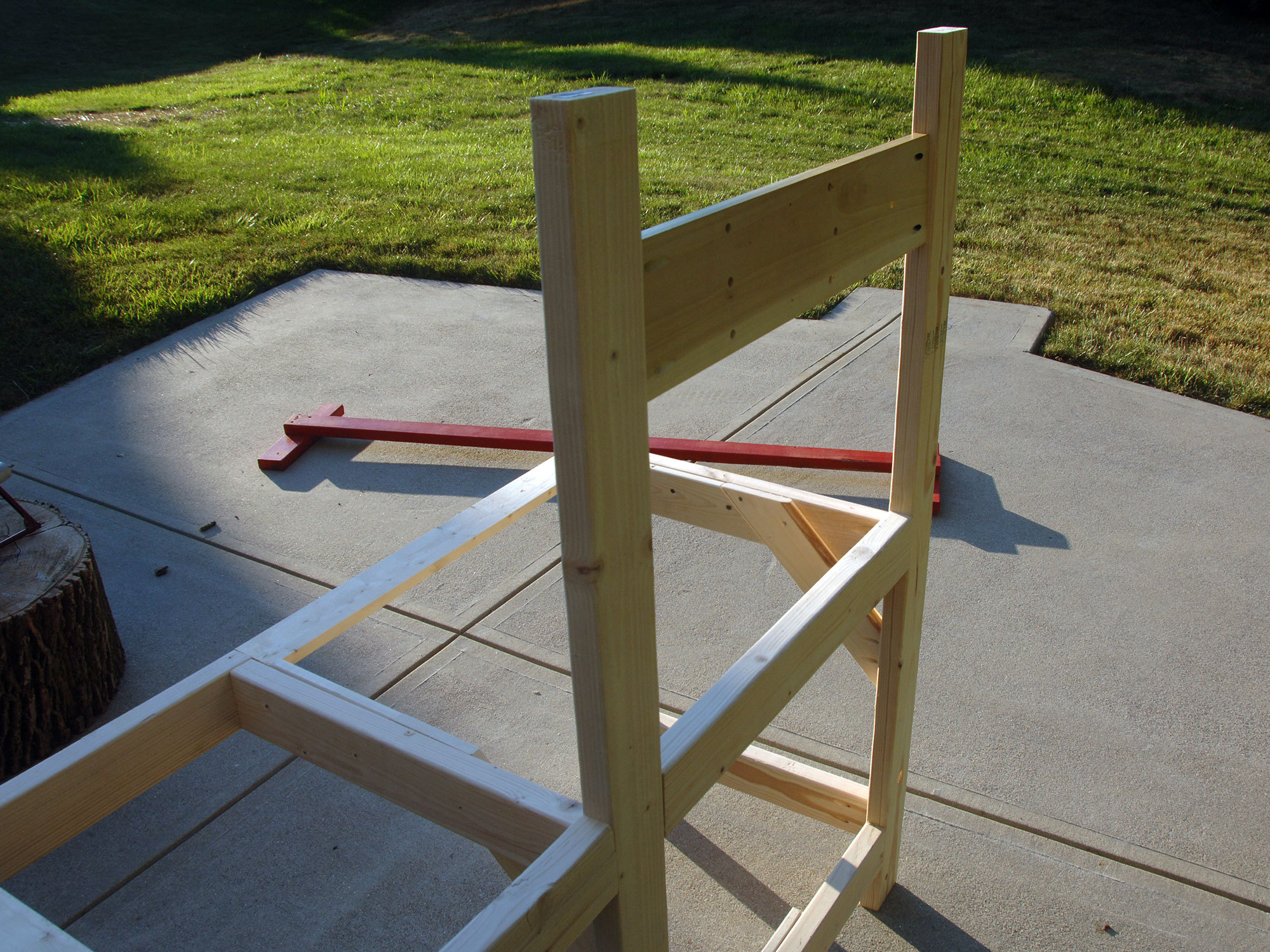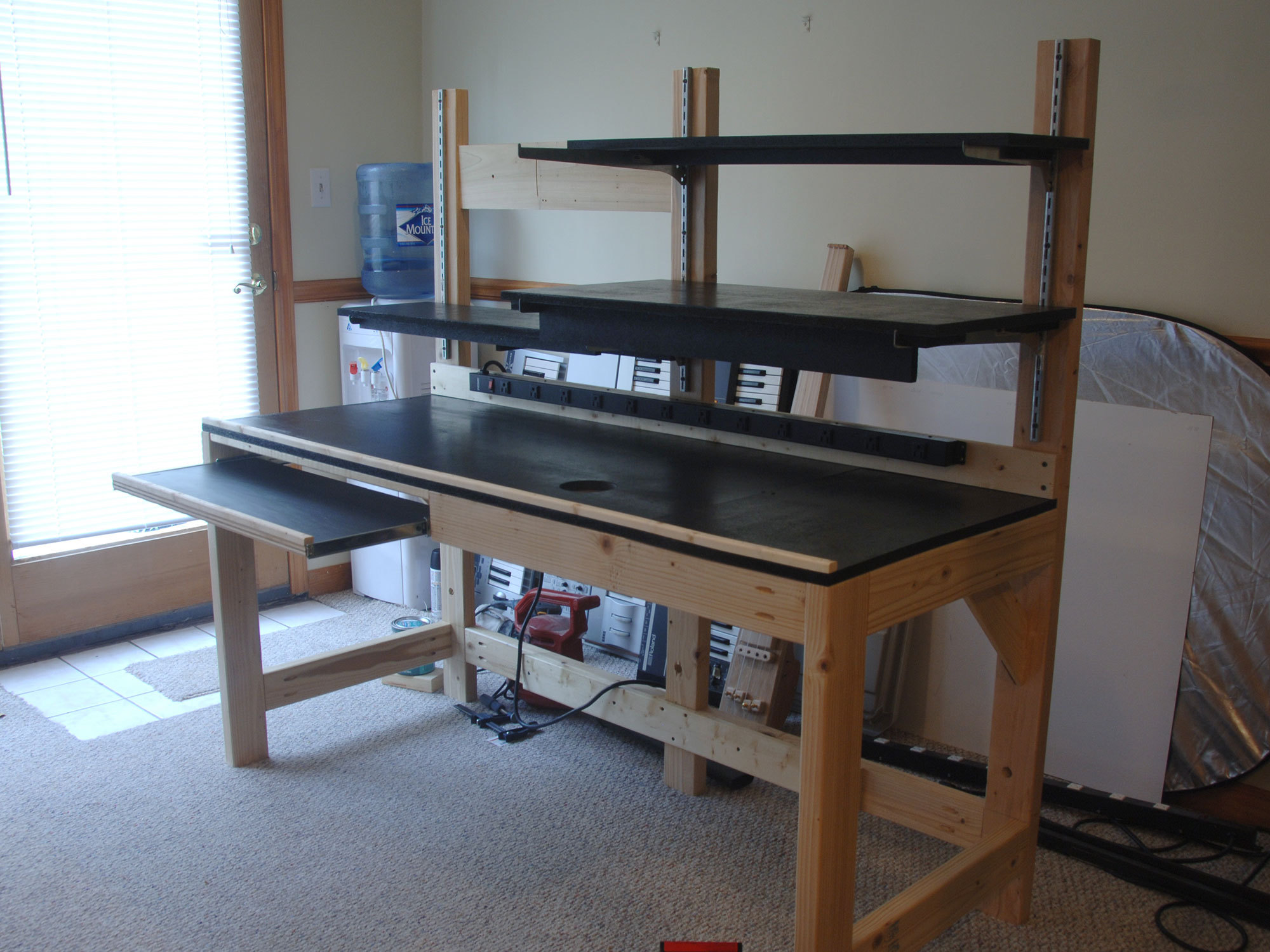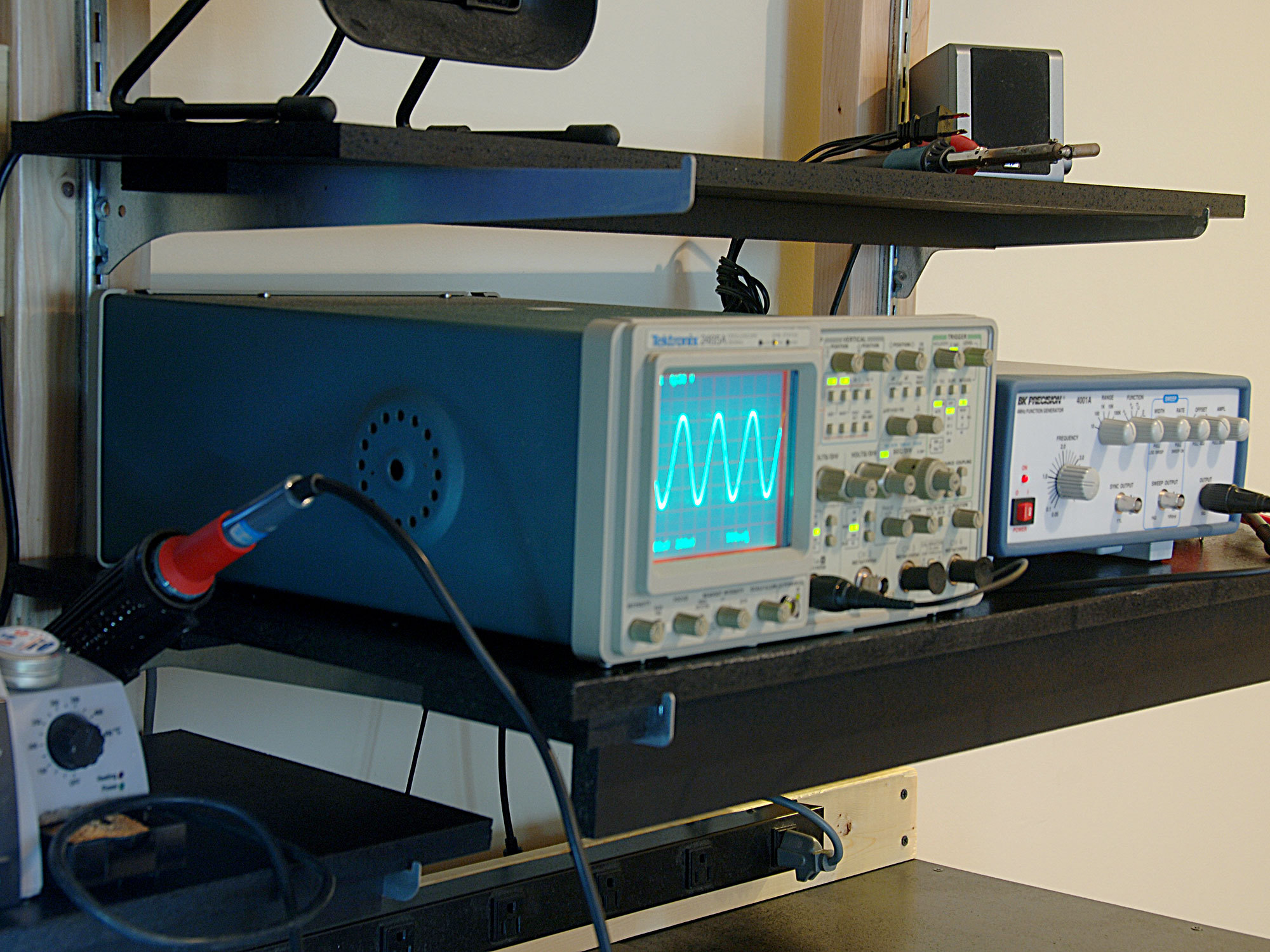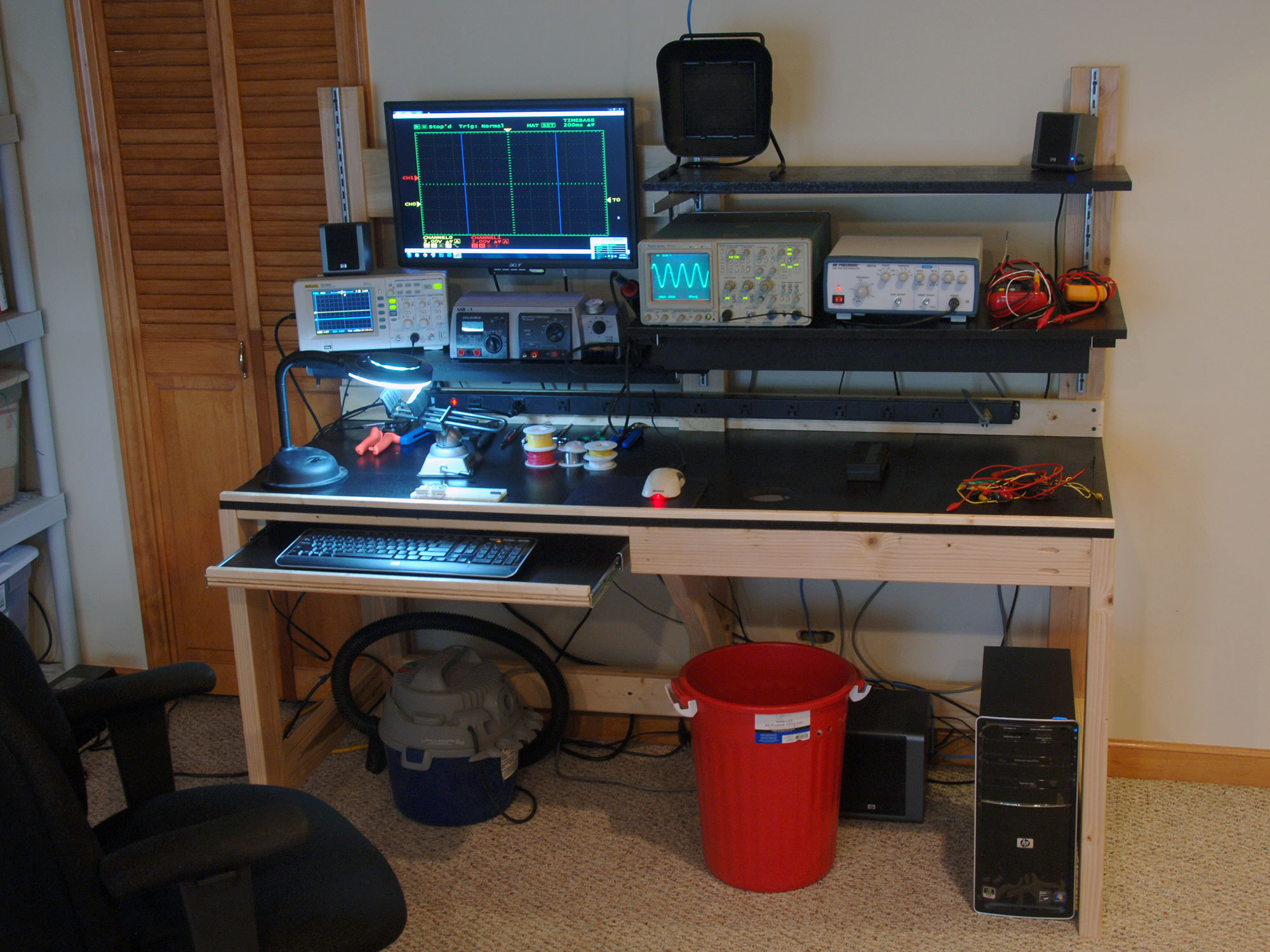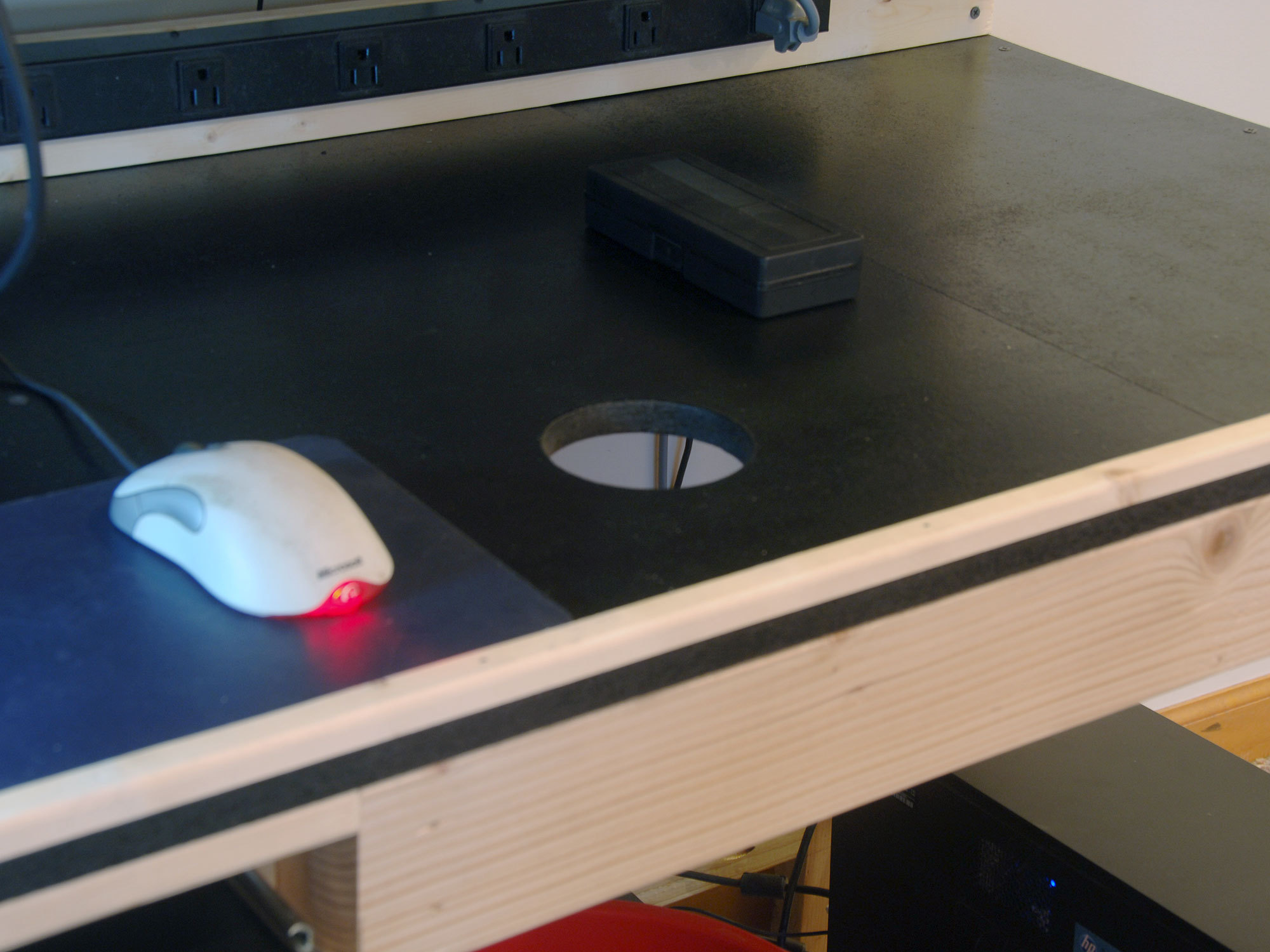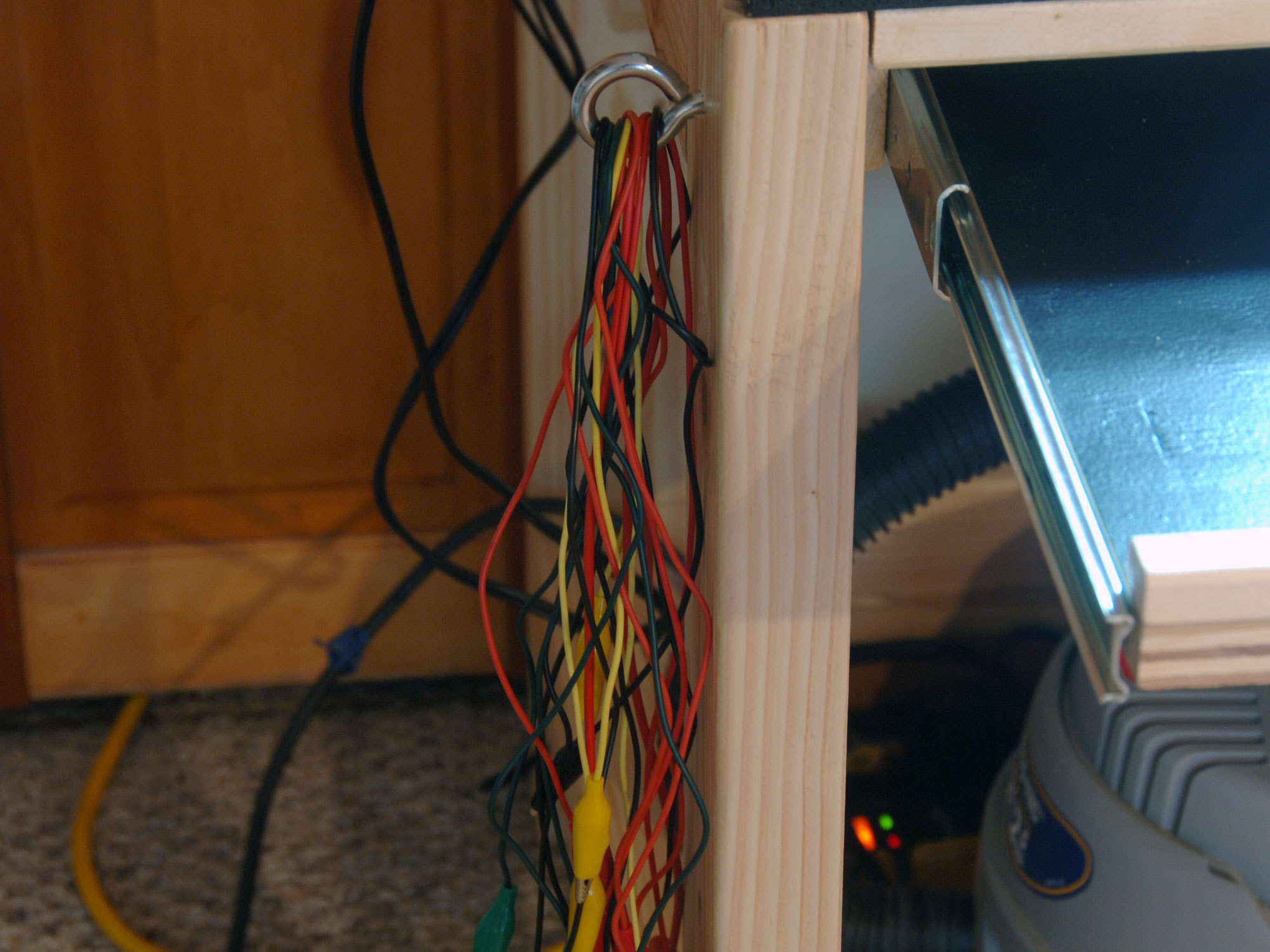This project is not so much a step-by-step guide, but more of an idea. Sometimes buying something is not really the best thing to do. I have a lot of electronic test equipment and I could not find a reasonably priced desk or bench that would put everything within easy reach. So I decided to build one.
Projects from Make: Magazine
Turning Scrap Wood into a Really Useful Workbench
For Father's Day I got a pocketing jig, which allows me to make quick joins in most types of wood. So I decided to put together the *perfect* electronics workbench from some left over timber.
